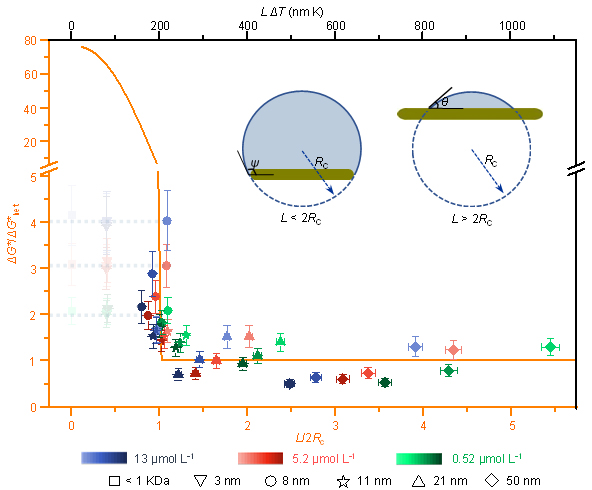Researchers probe the critical nucleus size of ice formation with graphene oxide nanosheets
Water freezing is ubiquitous, with impacts ranging from climate and chemical industry to cryobiology and materials science. Ice nucleation is recognized the controlling step in this process and has for nearly a century been assumed to involve formation of a critical ice nucleus as the central transition state. However, there is no direct experimental evidence for the existence of the critical ice nucleus due to its transient and nanoscale nature.
Recently, a joint research group from the Institute of Chemistry of Chinese Academy of Sciences (ICCAS), University of Chinese Academy of Sciences and Hebei University of Technology, led by Prof. WANG Jianjun, provided much awaited experiment-based information regarding the existence and temperature-dependent size of the critical ice nucleus, which have so far only been explored theoretically and using simulations. The work entitled “Probing the critical nucleus size of ice formation with graphene oxide nanosheets” was published in Nature.
“The work was inspired by the dramatically different behaviors in facilitating ice formation of antifreeze proteins and ice nucleation proteins induced by their primary discriminating factor of size,” the author BAI Guoying says. Researchers initiated their study thorough investigating ice nucleation in water droplets containing graphene oxide nanosheets (GOs) of controlled sizes. The experimental results show that GO significantly facilitate ice nucleation only above a critical size, which varies with the degree of supercooling of the droplets. “We infer from our experimental data and theoretical calculations that this value is determined by the size of the critical ice nucleus. For sufficiently large GOs, it sits on their surface and the corresponding nucleation free energy barrier is consistent with classical nucleation theory. In contrast, when the size of GOs is smaller than that of the critical ice nucleus, pinning at the GO periphery forces the forming critical ice nucleus to change shape and thereby gives rise to a much higher nucleation free energy barrier and failure to promote ice nucleation,” the author ZHOU Xin Says. “As pinning of a pre-critical nucleus at a nanoparticle edge is not specific to the ice nucleus on GOs, we expect that our approach can also be used to probe the critical nucleus of other nucleation processes,” WANG says.
The work is supported by NSFC, National Key R&D Program of China and the Strategic Priority Research Program of Chinese Academy of Sciences.

The abrupt change in the free energy barrier of ice nucleation on GO nanosheets. The inset shows the schematic illustrations of the shape of the critical ice nucleus when the size of GO nanosheet is smaller or larger than the diameter of critical ice nucleus, 2Rc. (Image by Prof. WANG Jianjun)
Contact:
Prof. WANG Jianjun
Institute of Chemistry, Chinese Academy of Sciences
Email: wangj220@iccas.ac.cn





